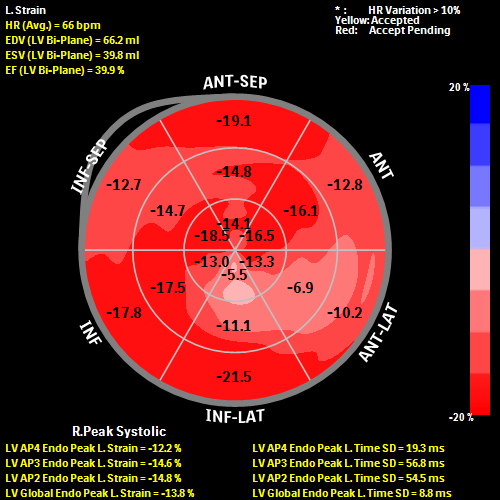
Global longitudinal strain ( GLS) : Fine tuning your 2D echo
Heart pumping i.e. left ventricular ejection fraction (LVEF) ( function of heart muscle) is considered as an important predictor of long term outcome in variety of problems mentioned below. However, recent scientific advances have shown a new insight that LVEF is affected later in course of disease. Global longitudinal strain is more sensitive than ejection fraction and it can detect changes in heart muscle at a very early stage. Even if ejection fraction is normal, abnormal GLS signifies advance disease.
How GLS is done:
GLS is a type of advance echocardiography where imaging of heart muscle is done in more precise manner. It quantifies shortening of every segment of left ventricular muscle. Integrating all segments, a bull’s eye image is created as shown below. It gives local as well as global longitudinal stain.
Disease where GLS can be useful:
Left ventricular hypertrophy: Athlete’s heart, hypertension, hypertrophic cardiomyopathy, amyloidosis
Heart failure with preserved ejection fraction: Elderly with diabetes and hypertension have this condition
Dilated cardiomyopathy
Ischemic heart disease: after heart attack
Unstable angina: ( A type of heart attack) for early diagnosis
Valvular heart disease: severe aortic stenosis/ aortic regurgitation, mitral regurgitation, etc
Cardiac amyloidosis
Myocarditis: inflammation of heart
Systemic inflammation: systemic sclerosis,
Post cancer chemotherapy: Chemotherapeutic agents have adverse effect on cardiac function. GLS is well established marker in this condition.

REPLY COMMENT